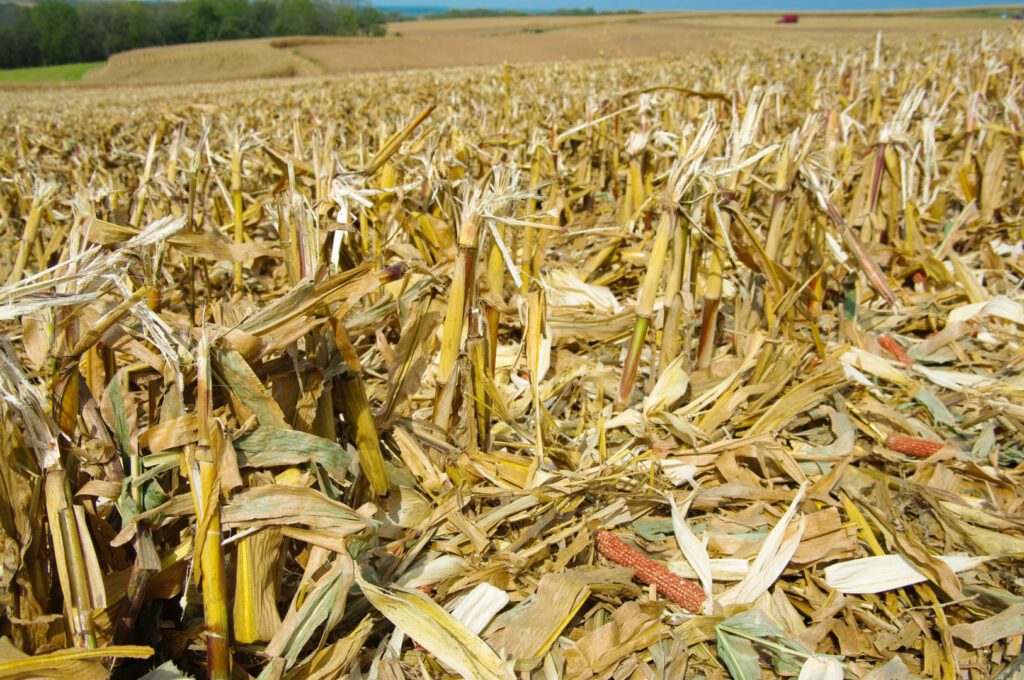The application of CX-1 and L-CBF this fall can be the first step to help ensure success next season. There can be 7,500 lbs. of stover left behind in a modest 155 bushels per acre corn field.
Secured within are:
- 45 pounds of N,
- 15 pounds of P2O5,
- 92 pounds of K2O,
- 6 pounds of S,
- 18 pounds of Ca,
- 18 pounds of Mg.
These valuable inputs become plant available through the biological process of mineral cycling.
It’s a process that can begin well ahead of next year’s planting. Very different than the loss that can occur with fall application of synthetic fertilizer, a fall application of CX-1 and L-CBF advances these minerals a few steps closer to plant availability the following spring.
Yield Decline Associated with Inconsistent Germination.
Data suggests a mere three-day lag in germination can lead to yield reductions of 16% or more in later germinating plants. Three additional days and the yield reduction can be in the 24% range. (Study data showed 230 BPA in plants that emerged first reduced to 174 BPA in those plants with a six-day delay.) A fall application of CX-1 and L-CBF can ensure a more even stand which means greater yield. Partial decomposition of the corn stalks in the fall means crumbles instead of hairpins under the planter coulter. A more uniform emergence is achieved when larger pieces are not there to shade pockets of soil preventing warming or inhibiting uniform planting depth.
Bio-Sanitation
Undigested corn residue serves as an ideal place for pathogens to survive over the winter. The best defense against fungal diseases is a strong, beneficial microbial community that can out-compete the fungal pathogens. A fall application of CX-1 and L-CBF reduces undigested residue and therefore reduces locations for pathogens to overwinter.
Organic Material vs. Organic Matter
Stover on the ground is organic material, but your soil needs organic matter. Cellulose is one of the most resistant of all plant tissues, and adding beneficial bacteria that digest cellulose to begin breaking it down into enzymes and organic matter gets you more organic matter and less organic material.
If these return-on-investment reasons aren’t quite enough, this anecdotal story might convince you. We hadn’t intended to conduct this trial; we simply ran out of time and material on the last few acres of a cornfield in the fall of 2016. Forgetting this by the following spring, we were reminded when the soil finisher went through the CX-1 and L-CBF applied areas like a proverbial “warm knife through butter”. However, organic material lodged in the equipment five times in those last few acres where the fall application was not accomplished. On and off the tractor to kick off the mud? This was all the data we needed to be convinced a CX-1 and L-CBF application is the right choice on our farm every fall.

